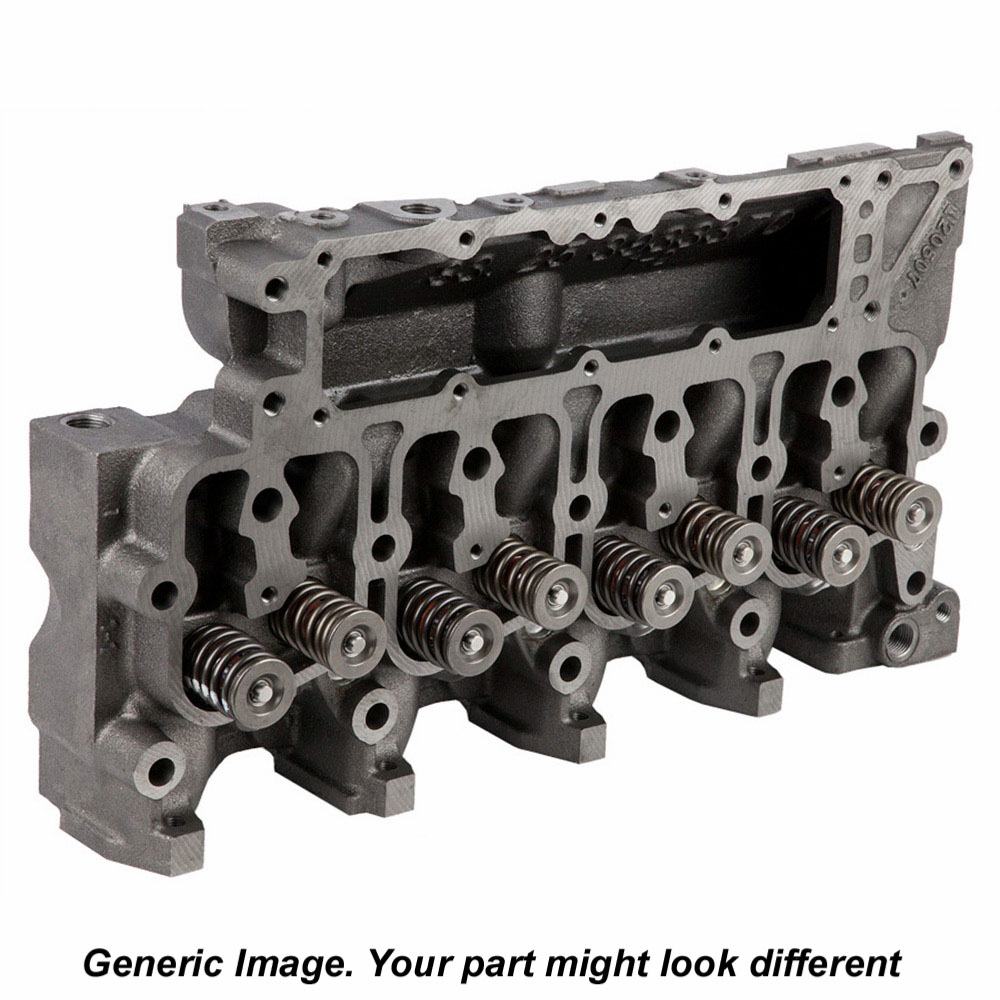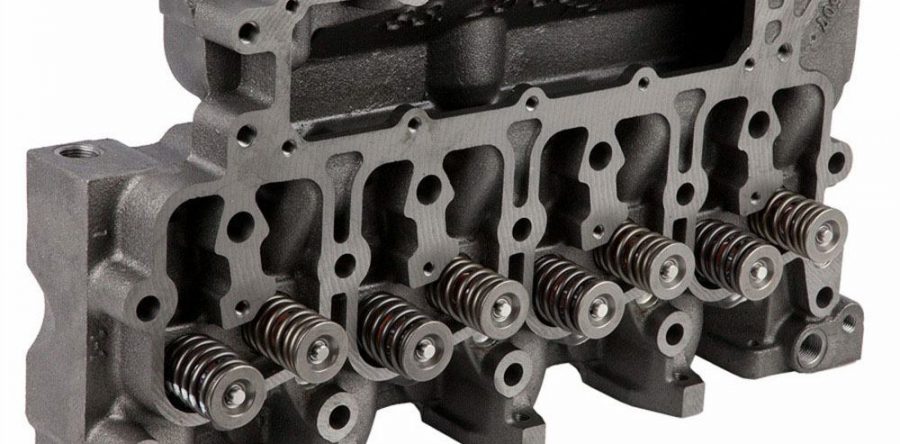A cylinder head is usually located on the top of the engine block. It serves as a housing for components such as the intake and exhaust valves, springs and lifters and the combustion chamber. This page covers the main function and various designs of cylinder heads, and their causes and symptoms of failure.
The passages in the cylinder head allow air and fuel to flow inside the cylinder while permitting the exhaust gases to flow out of it. The passages are otherwise called ports or tracts. The cylinder head also channels the coolant into the engine block, thereby cooling down the engine components. The cylinder head uses a gasket that aids in preventing water or oil from leaking into the combustion chambers.
|

Most OEM (original equipment manufacturer) cylinder heads are made out of cast-iron. A cylinder head made of cast-iron is more durable and less expensive. However, cast-iron is heavy and provides a lesser efficiency in dissipating heat. For this reason, some manufacturers prefer using cylinder heads made of aluminum. These cylinder heads are much lighter than cast-iron cylinder heads. Performance cars and race cars commonly have aluminum cylinder heads.
Cars with inline (straight) engines have one cylinder head and automobiles with V engines have two cylinder heads, one for each cylinder bank. In some vehicles, where cylinder banks are very close to the V engine, one cylinder is all that is needed. Large industrial vehicles may have one head per cylinder. This makes replacing a cylinder head much more affordable.
Types of Cylinder Heads
Flathead Cylinder Heads: These were the first type of cylinder heads. Flathead cylinder heads simply protect the cylinder block and have no moving parts. These cylinder heads do not allow for an efficient air flow, and thereby provide a poor engine performance.
Overhead Valve Cylinder Heads: These cylinders heads are superior to flathead cylinder heads. Overhead valve cylinder heads have the camshafts above them. These heads have their pushrods and valves connected to provide a smooth airflow.
Overhead Camshaft Cylinder Heads: These are the most advanced designs of cylinder heads. Overhead camshaft cylinder heads have the camshafts inside the cylinder head, eliminating the need of pushrods. This provides a better airflow, and in turn, increases the efficiency of the engine.
Problems in Cylinder Heads and their Symptoms
The most common problem with cylinder heads is cracks that occur often due to engine overheating. A cracked cylinder head may leak the coolant, due to which the engine will fail to cool efficiently. This results in further overheating of the engine. When a cylinder head cracks, it will also cause the oil to leak into the combustion chambers. This can be detrimental to the engine and can result in costly repairs for the engine. In many of these cases, the entire engine will have to be replaced. Other symptoms of a bad cylinder head include poor engine performance and engine misfire.
When a car overheats, a lot of people fill water in the radiator without attempting to narrow down the actual problem. This can also cause the cylinder head to crack, since when water is added, it results in a rapid change in temperature.
If you are looking to replace a defective cylinder head, you have come to the right place. We stock a broad range of quality parts for all makes and models. If you are interested in learning about the functionalities of other parts of a vehicle, you can refer to our how-to section.


